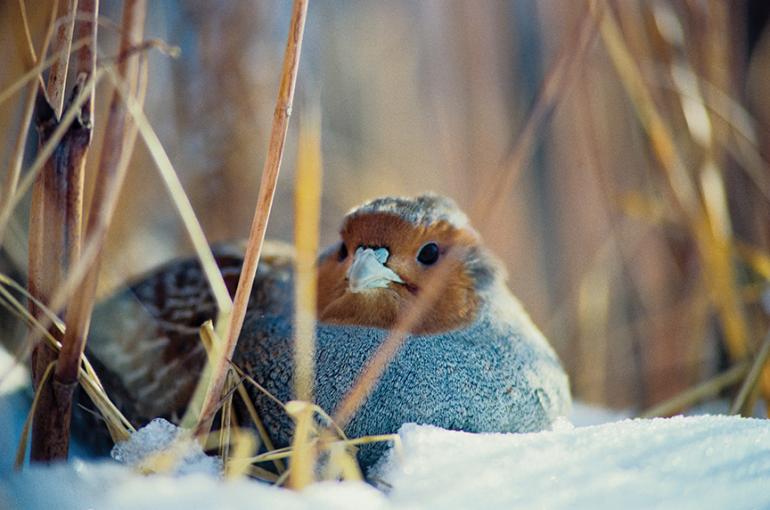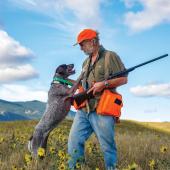Hungry for Huns
Duck 'n' covey.
I’d just finished filling the tank in my pickup when I heard the unmistakable chirp of a Hungarian partridge, technically known as the gray partridge. It sounded like the rusty squeak of a gate hinge. But there weren’t supposed to be Huns there—I was in the concrete bay of a busy gas station, which itself sat in a busy intersection. Asphalt radiated out from the place like spokes on a wheel. Somewhere out there in all that paved former prairie was a Hun, lonely and looking for a friend.
Habitat
If there’s anything characteristic about these ubiquitous Montana game birds, it’s that they show up, often as not, precisely where you don’t expect to see them. Still, like all game birds, they hew to specific habitat more often than not. The grassy, sagebrushy edges of wheatfields and rangelands are places where the betting man bets on finding Huns. Add hills to the equation, and the odds are good that you’ll find a covey or two.
Though Huns are not native—they were imported from Europe in the early 1900s—they thrive in much of Montana. Prime habitat in Montana is from the long spine of the Rockies east and from Hwy. 200 north, as well as in many mountain valleys in the western third of the state, such as the Gallatin Valley.
Huns are known as an “eruptive” species, which means there can be a lot one year and not many the next. (A cold, wet late June is deadly on chicks.) When populations are up, you can find Huns almost anywhere. Stick to the edges of wheat and barley fields and you’ll increase your chances of finding birds, especially if you hunt over a good pointing dog.
Behavior
By mid-February, Huns begin pairing up. The pairs nest in grasslands, sometimes near the borders of wheat fields, where the female lays a clutch of up to 20 eggs. The chicks—tiny yellow creatures no bigger than your thumb—are up and running by the end of June or early July. Huns are so secretive that I don’t start seeing family groups until August. By September, a typical covey will consist of the parents and chicks, with maybe a stray male or two they’ve picked up along the way. Covey size is typically around a dozen birds.
Gear
In the hand, Huns are easy to identify, though on the wing they’re often confused with chukars and sometimes sharp-tailed grouse. Handsome rusty-red face patches and tails are nearly identical on both males and females. Males have a slightly larger face patch than females and rusty-red shading on their wing shoulders. On the ground, they’re runners—except when they’re not. Huns hold surprisingly well for pointing dogs, but their discomfort with approaching hunters means they often flush at the edge of good shotgun range. Still, a tightly choked shotgun with heavy shot isn’t the answer. Any open-choked shotgun in any common gauge will work, and size 6 to 7.5 shot is plenty large enough.
Regs
Huns are superb game birds. Since the season opens on September 1 and runs through January 1, they can provide good, and sometimes great, sport for four long months. They hold well for a pointing dog, flush hard, and fly fast. But they aren’t popular with many upland hunters, because the birds often live in broken, hilly country where walking is difficult. The upside is that when you do find them, the daily limit is eight, more generous than any other Montana upland bird. For the record, I’ve shot a limit of Huns exactly twice in 31 years—but there’s always next season.
Dave Carty is an avid bird hunter and freelance writer living in Bozeman. This story originally appeared in Montana Outdoors.











